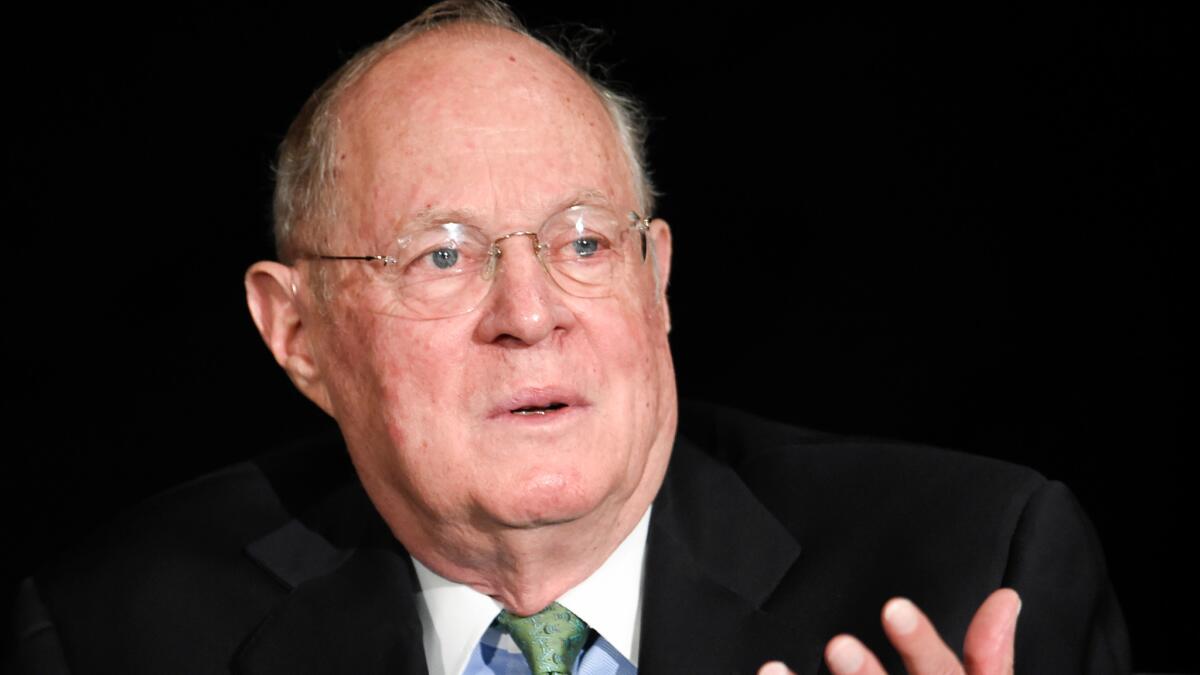Editorial: The Supreme Court keeps affirmative action alive — for now

- Share via
Thursday’s 4-3 Supreme Court decision upholding a racial preference program at the University of Texas at Austin is a dramatic victory for affirmative action, snatched from what once seemed a likely defeat.
Yes, Justice Anthony M. Kennedy’s majority opinion is full of qualifications. He makes much of the unusual nature of the program challenged by a disappointed white applicant (it involved only a minority of places in the freshman class, most of which was populated on the basis of high school rank). He also warns that the court’s decision to uphold the Texas plan as it existed doesn’t mean that that institution (and others) mustn’t continually refine their admissions programs to ensure that they don’t overuse racial classifications.
Kennedy, who dissented in the 2003 case in which the court last upheld racial preferences, also reiterated the court’s statement at an earlier stage in this case that universities that take race into account in admissions must be willing to show in court that doing so is “necessary” to achieving the goal of educational diversity.
These reservations might suggest that this is only a temporary victory and that the conservative groups that have relentlessly challenged affirmative-action programs will be back to fight another day with a greater hope of success.
We like to think that won’t be the case, and that Justice Kennedy – who for the time being is a swing vote on this issue – has finally recognized that the court does neither higher education nor the Constitution any favors by continuing to nitpick the attempts of universities to ensure that their student bodies are diverse in the broadest sense possible.
That’s what the University of Texas tried to do. Under state law, most places in the flagship campus’ freshman class were determined by class rank, with admission guaranteed to students who finished in the top 10%. Because so many schools in Texas are racially homogeneous, this in and of itself meant that the university did enroll a substantial number of black and Latino students.
But in filling the rest of the places, the university sought to achieve what it called “diversity within diversity” by admitting minority students who were academically gifted even if they hadn’t finished in the top 10% and who came from a variety of socioeconomic backgrounds: suburbs as well as cities, professional as well as working-class families. This approach not only enriched students’ classroom experiences; it also broke down racial stereotypes.
We hope that this decision marks the end of the court’s micromanaging of good-faith efforts to diversify higher education. State universities aren’t required by the Constitution to use racial preferences in admission – and some states, such as California, unwisely choose not to – but when they do, it is ridiculous to argue that such plans violate the Constitution. Affirmative action is a valuable tool not only for ensuring diversity on campus but also for redressing deep-rooted racial inequalities. The court should leave the universities to get on with their important work.
Follow the Opinion section on Twitter @latimesopinion and Facebook
A cure for the common opinion
Get thought-provoking perspectives with our weekly newsletter.
You may occasionally receive promotional content from the Los Angeles Times.






